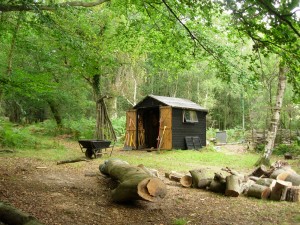Regulations: Article 4 Direction
Owning a wood that has a local authority “Article 4” direction is a bit like owning a house in a conservation area: you can still maintain and improve your property, but the local authority has to give permission for developments and improvements that would normally be “permitted development”.
Permitted development rights for a woodland include activities such as maintaining and creating new tracks, putting in new gates and fences, building a shed, and parking a caravan with the intention of staying not more than 28 nights a year.
When a local authority puts an Article 4 direction in place, the Notice will specify what types of developments - that are normally permitted development rights - can no longer be regarded as permitted. This does not make those developments impossible: it just means that planning permission must first be obtained. The good news is that the application for permission is free of charge.
 Article 4 directions can be applied where the council wishes to protect the appearance, landscape, character, or amenity value of a woodland. A few of our woodlands in Monmouthshire, Cheshire, Essex and Kent currently have Article 4 directions in place. They may also be used in combination with Tree Preservation Orders, to give maximum protection to a woodland. The process may be inconvenient, but it may provide some security to know that neighbouring woodland owners are similarly constrained from possibly undesirable development.
Article 4 directions can be applied where the council wishes to protect the appearance, landscape, character, or amenity value of a woodland. A few of our woodlands in Monmouthshire, Cheshire, Essex and Kent currently have Article 4 directions in place. They may also be used in combination with Tree Preservation Orders, to give maximum protection to a woodland. The process may be inconvenient, but it may provide some security to know that neighbouring woodland owners are similarly constrained from possibly undesirable development.
Any application for planning permission is much more likely to be successful if accompanied by a management plan. The local Forestry Commission officer should be more than happy to meet with you in your woodland to discuss what you want to do and help draw up an agreed management plan. In this you would cover any work you might plan to do. Unless there is also a Tree Preservation Order in place you will be free to carry out normal woodland management activities, creating clearings, etc, but the plan can also cover work that is covered by the Article 4, such as creating paths, fencing, gates, etc, and then accompany your planning application.
